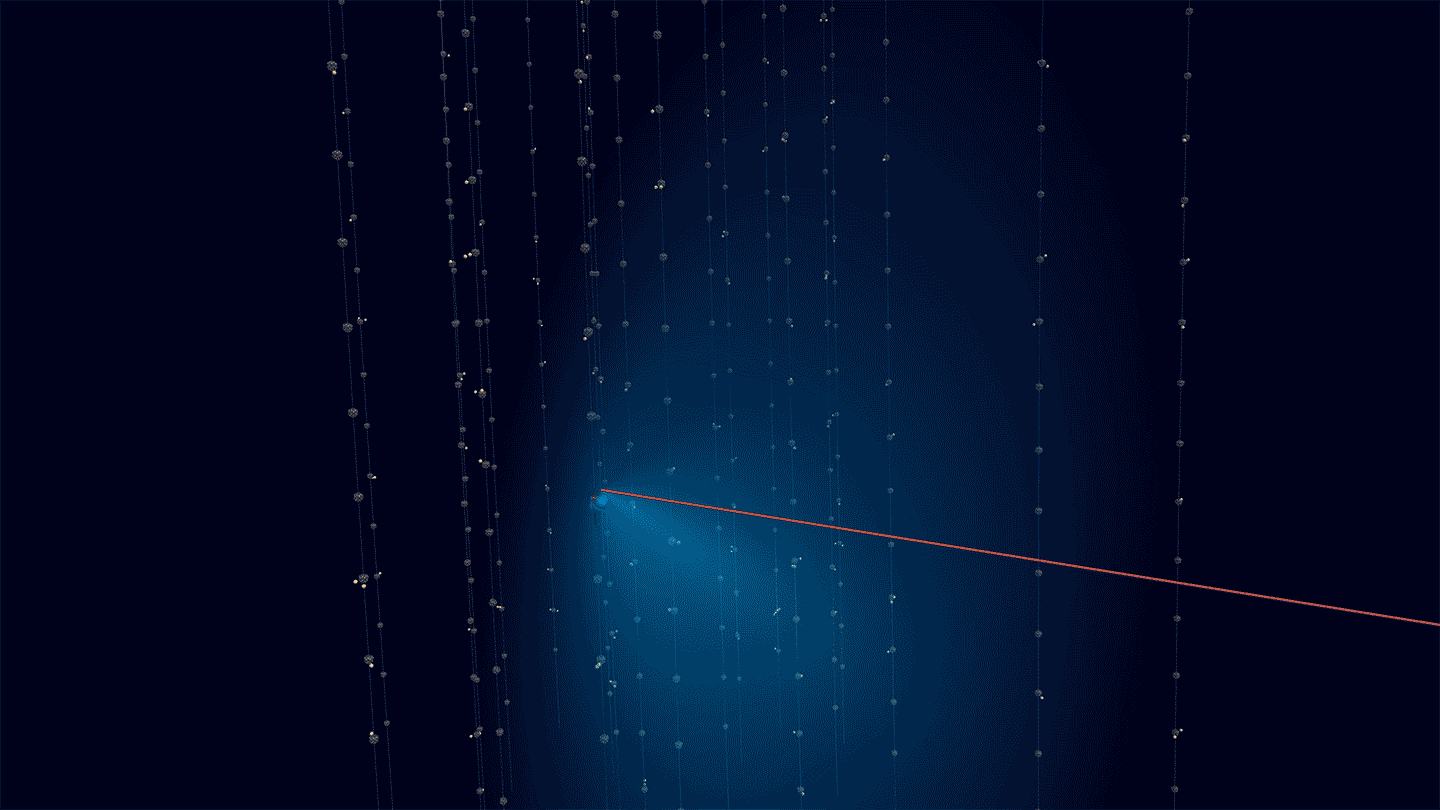A cosmic neutrino of unknown origins smashes energy records
Such high-energy neutrinos could offer insight into the universe’s most cataclysmic phenomena

In February 2023, a muon zoomed through the forest of underwater cables in a KM3NeT telescope. As the muon crossed the detector (path in red), it gave off a faint glow detected by light sensors along the cables (activated sensors in blue and orange).
KM3NeT